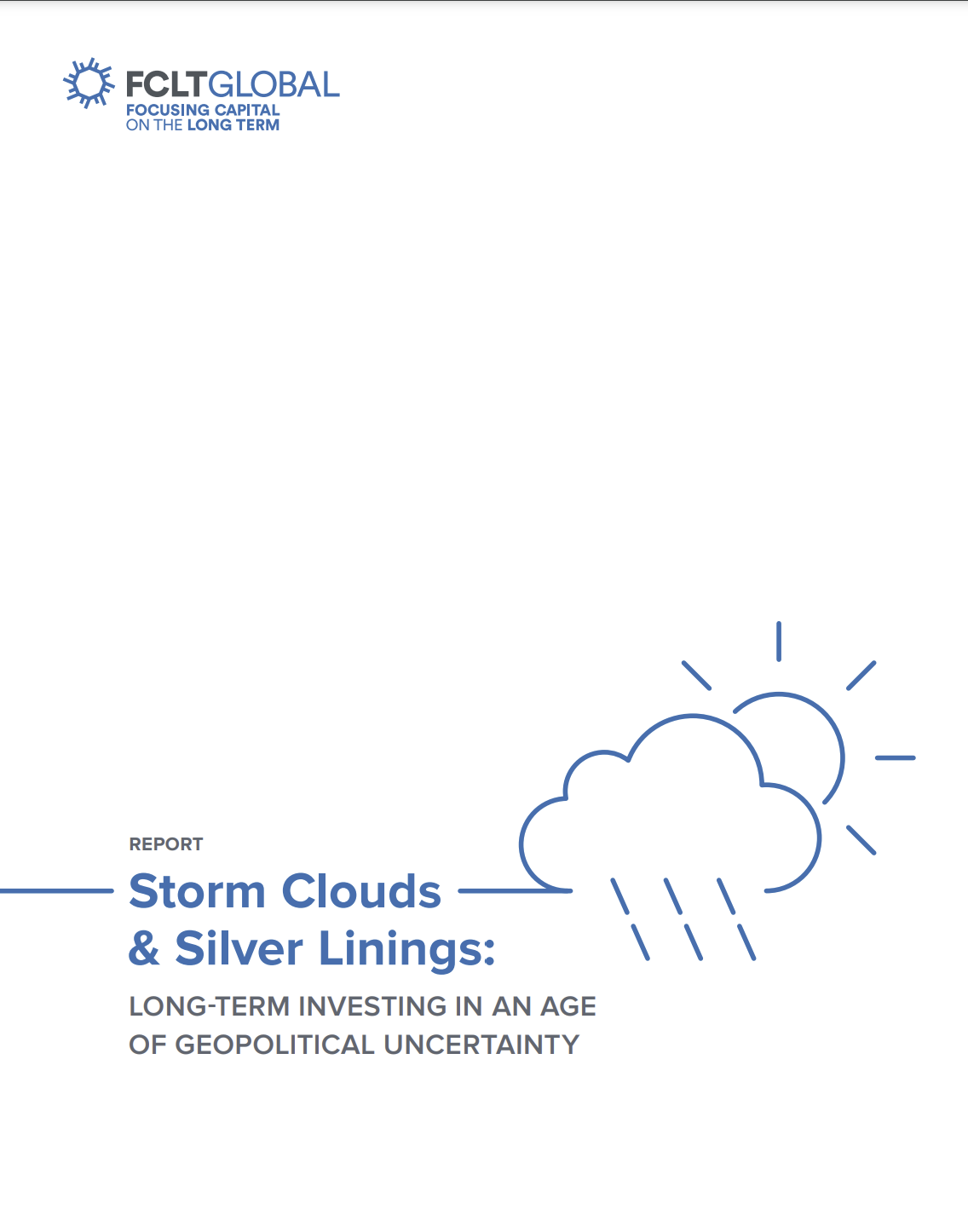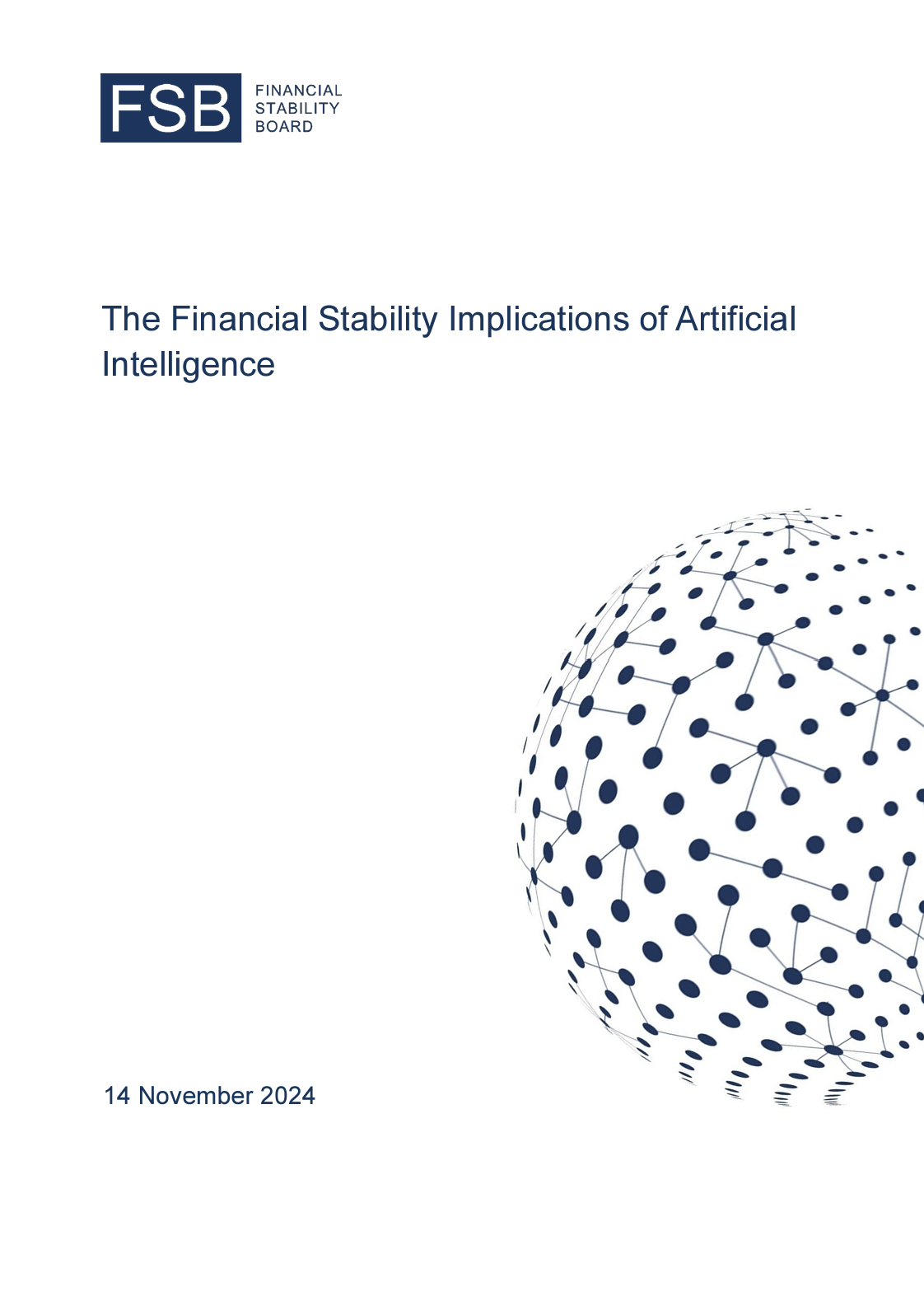Library | SASB Sustainability Sector
Technology & Communications
Refine
79 results
REFINE
SHOW: 16


Storm clouds and silver linings: Long-term investing in an age of geopolitical uncertainty
The report explores the impact of geopolitical uncertainty on long-term investing, highlighting risks and opportunities for institutional investors. It emphasises the need for integrating geopolitical considerations into investment strategies, governance, and decision-making frameworks. The report provides practical tools for investors to assess geopolitical resilience, manage risks, and engage with stakeholders while balancing short-term pressures with long-term value creation.
Pensions in the age of artificial intelligence
The report explores how artificial intelligence (AI) and machine learning (ML) can address challenges in global pension systems. It highlights AI's potential to enhance governance, personalisation, fraud prevention, and investment strategies while emphasising ethical implementation and data privacy considerations to optimise retirement outcomes and ensure system sustainability.
Reframing child labour due diligence for businesses and investors in increasingly regulated and resilience challenged supply chains
The report explores reframing child labour due diligence in supply chains, emphasising systemic solutions, collaboration, and addressing root causes. It critiques current top-down models, highlighting their inefficiencies and unintended consequences.
Infrastructure tokenization: Does blockchain have a role in the financing of infrastructure?
The report explores the potential of blockchain technology in financing infrastructure projects. It evaluates blockchain's capabilities in enhancing efficiency, transparency, and accessibility in infrastructure tokenisation, while addressing challenges like regulatory constraints, market adoption, and technical barriers. The findings highlight both opportunities and limitations for integrating blockchain into infrastructure financing.
Blockchain for sustainability: A systematic literature review for policy impact
The report reviews blockchain's role in sustainability, analysing 10,188 studies. It highlights blockchain's potential in supply chain management, energy systems, and IoT-based solutions like smart cities. However, gaps persist in aligning blockchain applications with global ESG regulations and carbon trading mechanisms. Recommendations aim to improve blockchain's utility in achieving net-zero goals.
Responsible investment and blockchain
The report explores blockchain technology's relevance to responsible investment, highlighting its potential to enhance transparency, automate processes, and improve ESG data tracking. It discusses blockchain's implications for shareholder voting, decentralised systems, financial inclusivity, and sustainability. Practical challenges, including regulation, technical integration, and energy use, are also addressed. .
The financial stability implications of artificial intelligence
The report discusses the rapid adoption and integration of artificial intelligence (AI) in the financial sector, driven by advancements in technology and increasing operational efficiency. Key risks include dependencies on third-party providers, market correlations, and cyber vulnerabilities. Generative AI's accessibility could amplify systemic risks, necessitating enhanced regulatory frameworks, vigilant monitoring, and robust governance to ensure financial stability amid evolving AI technologies.
Developing responsible chatbots for financial services: A pattern-oriented responsible AI engineering approach
The report outlines a pattern-oriented engineering approach for responsible AI in financial services. It identifies challenges in scaling responsible AI, introduces a Responsible AI Pattern Catalogue for addressing lifecycle risks, and provides case studies on chatbot development. The study underscores governance, process, and product strategies to operationalise responsible AI principles effectively.
Investor water toolkit
Published by Ceres, this is a first ever comprehensive resource to evaluate and act on water risks in investment portfolios. This how to guide includes links to resources, databases, case studies and other tools for all investors to use.
Net Environmental Contribution (NEC) metric
This tool measures the environmental impact of economic activity, company, or sector, to deliver a net contribution value on -100% to +100% scale, using physical data from across the value chain. It can be applied at company, portfolio, index, product/source levels. Includes qualitative and quantitative criteria on biodiversity.
Forest IQ
Powered by data from Trase Earth, Forest IQ has been developed to support banks and investors assess and manage their exposure to deforestation risk. Forest IQ provides market leading data about corporate performance on deforestation impacts, land conversion, and natural ecosystem and human rights abuses. Trase Earth offers open source data that is free to download.
Land use finance impact hub
The hub hosts a collection of tools and guidance to help financial institutions harmonise environmental and social impact monitoring for sustainable land use finance.
Exiobase
EXIOBASE is a global, detailed Multi-Regional Environmentally Extended Supply-Use Table (MR-SUT) and Input-Output Table (MR-IOT). It was developed by harmonising and detailing supply-use tables for a large number of countries, estimating emissions and resource extractions by industry.
Generative AI, the American worker, and the future of work
The report examines the impact of generative AI on American jobs, noting significant disruption in both cognitive and nonroutine tasks, particularly in middle- and high-wage sectors. It highlights the need for policies that engage workers in AI’s deployment, enhance worker rights, and ensure AI-driven advancements benefit workers while minimising risks.
Handbook of artificial intelligence and big data applications in investments
This handbook provides a comprehensive overview of artificial intelligence (AI) and big data applications in investments. It covers topics such as machine learning, natural language processing, trading algorithms, and AI-driven customer service. Aimed at finance professionals, it offers insights into practical use cases, challenges, and evolving trends in AI adoption, making it a valuable resource for those navigating the integration of these technologies in investment strategies.
The finfluencer appeal: Investing in the age of social media
The report titled examines the role of financial influencers ("finfluencers") in shaping investment decisions, especially among Gen-Z investors. It highlights the regulatory challenges posed by finfluencers, explores their content's appeal to younger audiences, and provides recommendations for enhancing financial literacy and regulatory frameworks.














